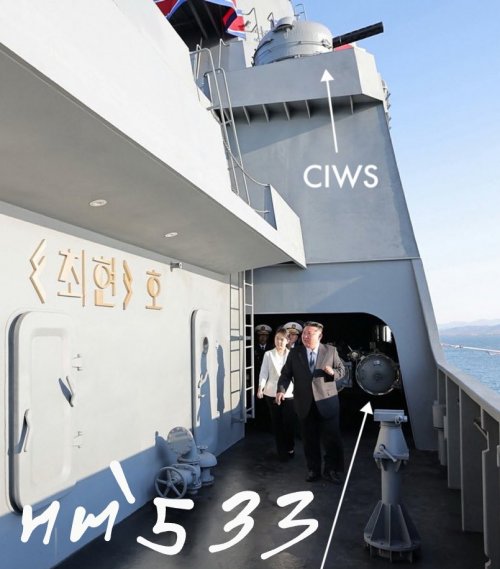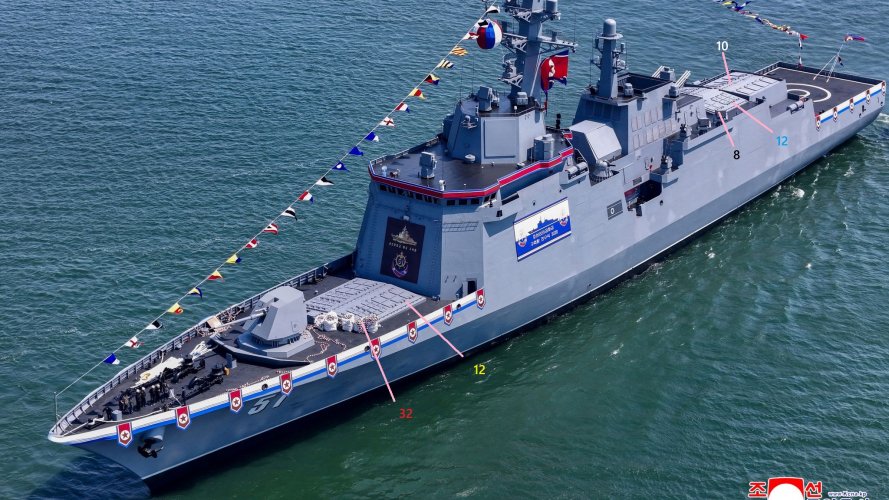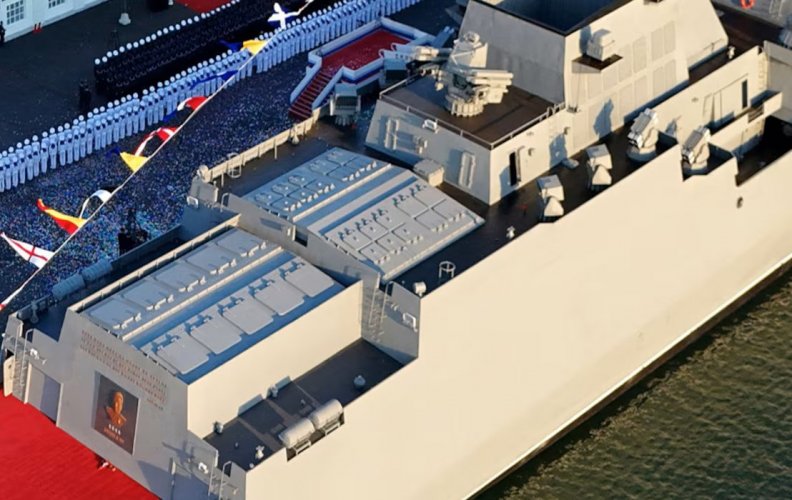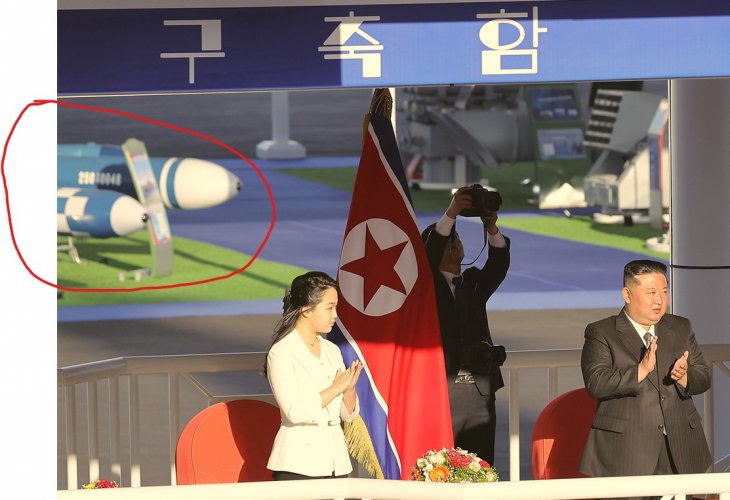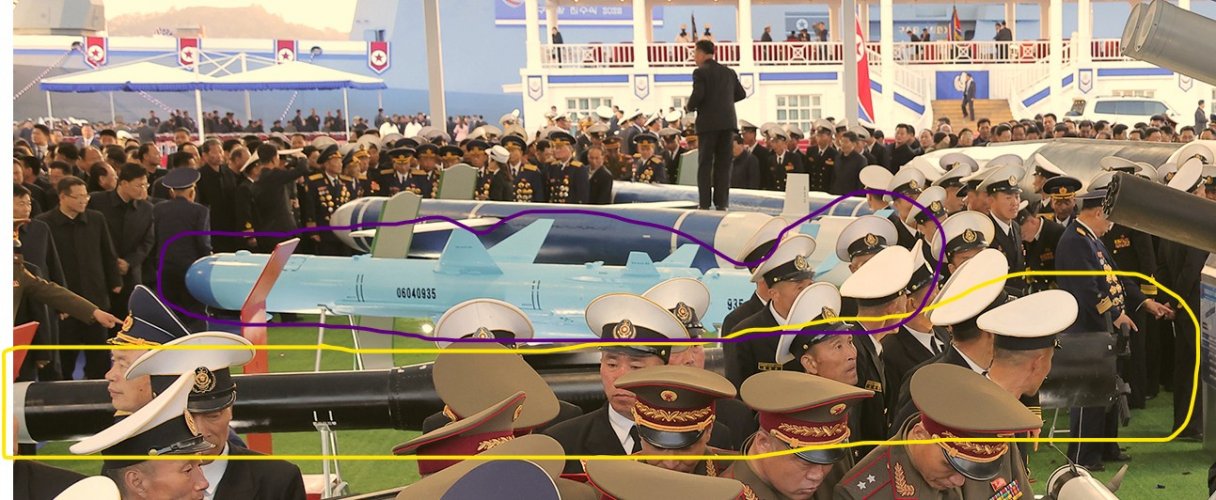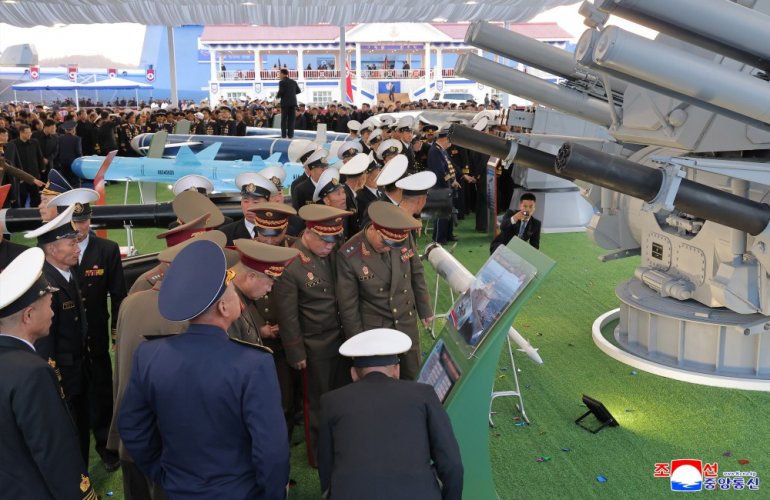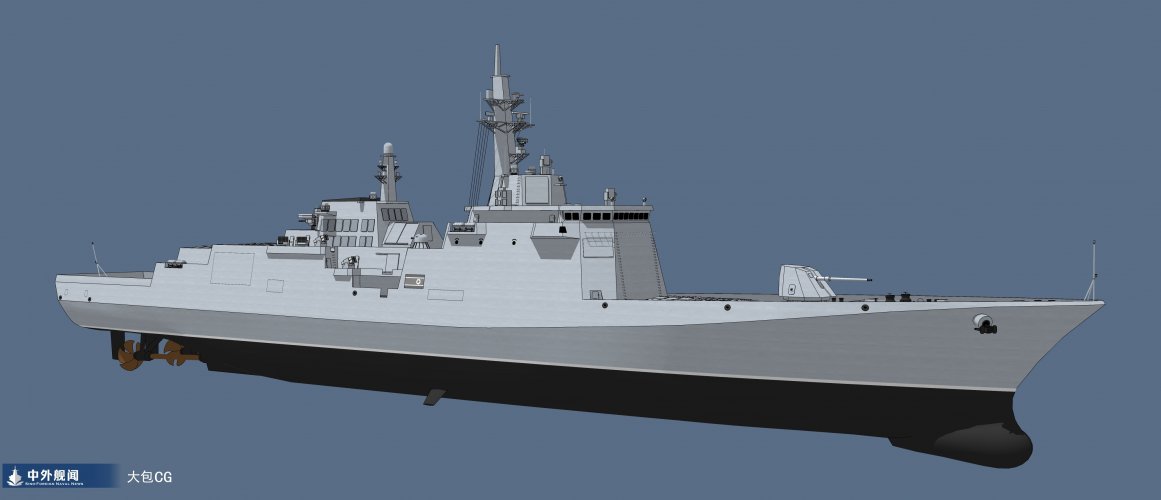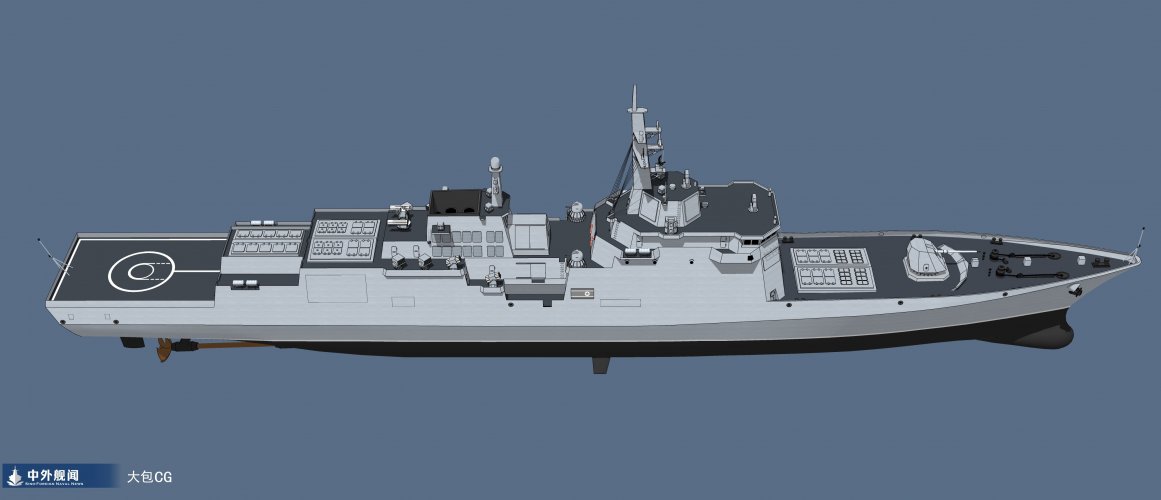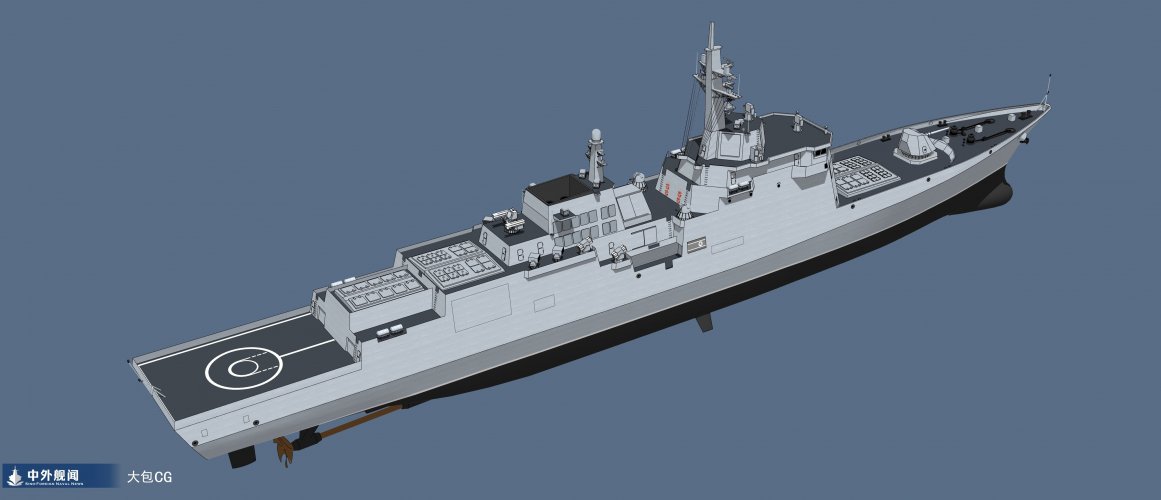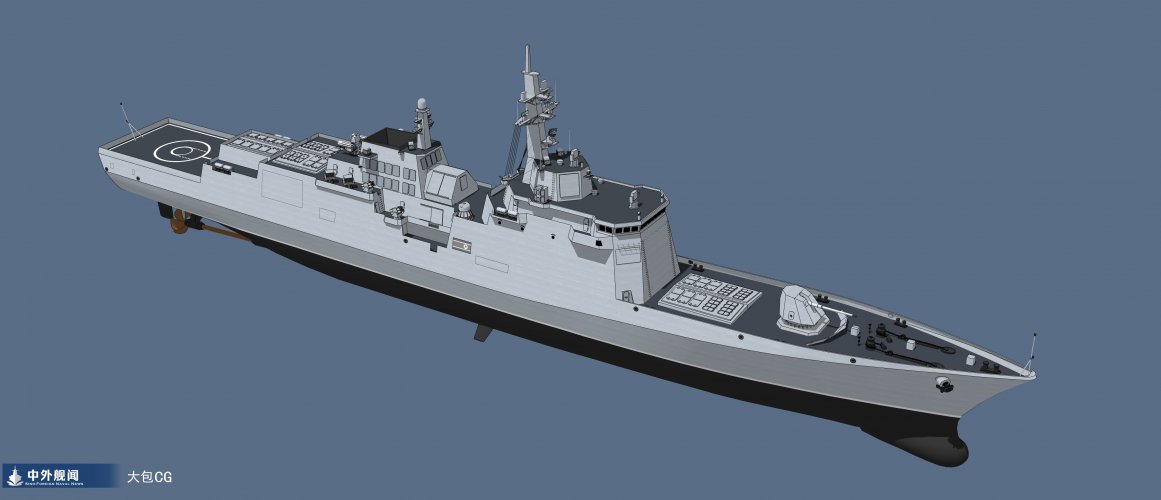You are using an out of date browser. It may not display this or other websites correctly.
You should upgrade or use an alternative browser.
You should upgrade or use an alternative browser.
DPRK Navy ships
- Thread starter lancer21
- Start date
- Joined
- 3 June 2011
- Messages
- 18,335
- Reaction score
- 12,233
Ainen
I really should change my personal text
- Joined
- 25 August 2011
- Messages
- 1,277
- Reaction score
- 1,714
For China, most North Korean strengthening is trouble, not asset.Furthermore the Western Pacific is getting more and more militarized every year, with various nations building up and modernizing their navies and the USN shifting their attention from the unimpressed European theater to the crucial WESTPAC. And especially with neighbors like Japan and the ROK, which field large fleets, it makes sense to just go "fuck it we ball". I can also imagine that the Chinese are very content with this development, as it would mean that in the future there would be aa sizeable, friendly Navy in the region which could distract and deal with lesser adversaries in a potential conflict against the United States (or alternatively also be used to harass USN ships).
China doesn't really need help in this regard, and it can't somehow skip region right next to Beijing. For same reason, if DPRK will be seriously threatened, China will intervene even despite negative feelings towards Pyongyang.
But DPRK tricks (nuclear, missile program) bring a lot of trouble for China. China is most certainly not interested in geopolitical tension in the region...and DPRK not just brings it, it also holds keys of this instability. Not Beijing.
Last thing Beijing wants is genuine pretext for USCG presence off peninsula(or THAAD, or ROK ballistic missile program, or, or). North gives this pretexts all the time.
Petty politics would be best left out of the discussion, this is about DPRK ships so better stick to that.
If i'm counting correctly, apart from the 74 VLS tubes of various sizes, there are still apparently 8 inclined tubes for possibly Hwasal CMs, plus 8 tubes of the Kashtan, so this ship possibly has 90 (!) ready to fire weapons. Not to mention the gatlings. So it has practically the tube firepower of a 052D class DDG on likely a smaller displacement.
If i'm counting correctly, apart from the 74 VLS tubes of various sizes, there are still apparently 8 inclined tubes for possibly Hwasal CMs, plus 8 tubes of the Kashtan, so this ship possibly has 90 (!) ready to fire weapons. Not to mention the gatlings. So it has practically the tube firepower of a 052D class DDG on likely a smaller displacement.
Torpedoes or this (Circled in Yellow)CIWS 30mm and Torpedo Tube 533mm
View attachment 768084
Attachments
sahureka
ACCESS: Restricted
- Joined
- 8 May 2023
- Messages
- 49
- Reaction score
- 179
+View attachment 768085
View attachment 768086
Makes the new US frigate look like a sad sack.
View: https://x.com/stoa1984/status/1916131505593848275
View: https://x.com/JosephHDempsey/status/1916162696816349558
In the centre of the ship is a structure resembling that of the Amnok-class corvette from which the Hwasal-2 (2x4) cruise missiles are launched
Here on the Choi Hyun 51
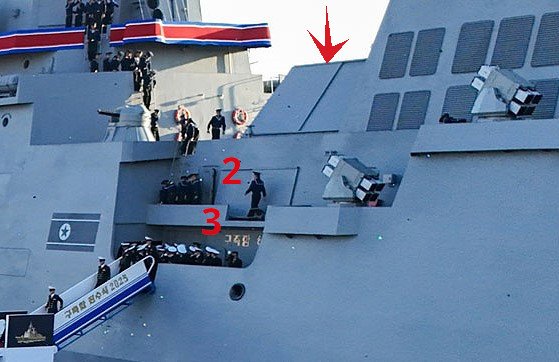
Numbers 2 and 3 are for the venting of missile launch gases
Number 2 in ready-to-launch conditions a door slides to the side opening the vent
Number 3 is an always open arrangement
for comparison note the structure from which the cruise missile is launched from the Amnok-class corvette

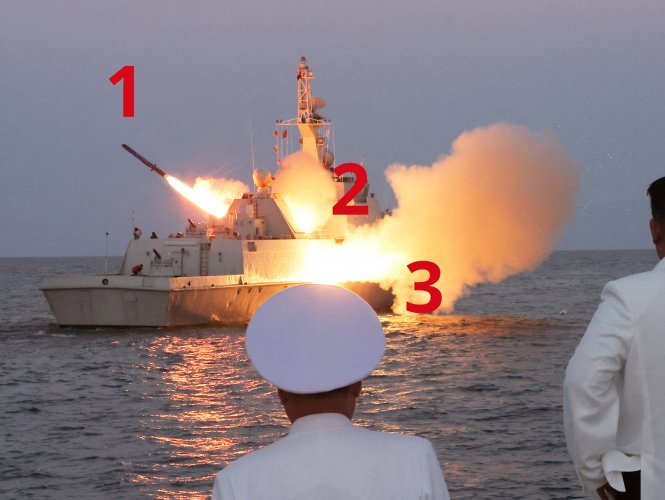
sahureka
ACCESS: Restricted
- Joined
- 8 May 2023
- Messages
- 49
- Reaction score
- 179
looks like the russian anti-submarine missiles 91РЭ2 which is launched by VLS from shipsTorpedoes or this (Circled in Yellow)

Scott Kenny
ACCESS: USAP
- Joined
- 15 May 2023
- Messages
- 11,628
- Reaction score
- 14,304
21" ASW torpedoes is interesting.
sahureka
ACCESS: Restricted
- Joined
- 8 May 2023
- Messages
- 49
- Reaction score
- 179
Interesting what Kim Jong Un's speech at ceremony of launching destroyer Choi Hyun 51 weapon systems installed and what is planned for the future
The emergence of this destroyer has made a breakthrough in modernizing our naval forces.
To explain the hardware of the destroyer, an ensemble of our self-reliant defence technology, it is equipped not only with anti-air, anti-ship, anti-submarine and anti-ballistic missile capability but also with weapon systems for the most effective ground striking operations, like hypersonic strategic cruise missile, tactical ballistic missile and other means of strike. So it is capable of performing multi-mission surface operations and thus increasing the possibility of direct intervention by the Navy in the ground operations.
This is one of the things of great significance in view of the militar
This warship will be handed over to the Navy and launched into operation in early next year after going through the necessary procedures, like the assessment of its performance and capability for conducting operations and the test of operation of its integrated equipment.
We will, of course, build warships of this class next year, too. And we are planning to build in the shortest time possible a cruiser, whose operations capability is greater, as well as escort ships of various classes, and are now examining their master plans at the final stage.
We will execute this plan of building multi-mission destroyers year by year, and these ships will sail for operations in ordinary times in the coastal defensive waters and intermediate waters.
.......
Today's ceremony of launching a new-type destroyer will serve as a signal flare for strengthening the Navy of the DPRK.
And the second signal flare will be just the building of a nuclear-powered submarine.
To explain the hardware of the destroyer, an ensemble of our self-reliant defence technology, it is equipped not only with anti-air, anti-ship, anti-submarine and anti-ballistic missile capability but also with weapon systems for the most effective ground striking operations, like hypersonic strategic cruise missile, tactical ballistic missile and other means of strike. So it is capable of performing multi-mission surface operations and thus increasing the possibility of direct intervention by the Navy in the ground operations.
This is one of the things of great significance in view of the militar
This warship will be handed over to the Navy and launched into operation in early next year after going through the necessary procedures, like the assessment of its performance and capability for conducting operations and the test of operation of its integrated equipment.
We will, of course, build warships of this class next year, too. And we are planning to build in the shortest time possible a cruiser, whose operations capability is greater, as well as escort ships of various classes, and are now examining their master plans at the final stage.
We will execute this plan of building multi-mission destroyers year by year, and these ships will sail for operations in ordinary times in the coastal defensive waters and intermediate waters.
.......
Today's ceremony of launching a new-type destroyer will serve as a signal flare for strengthening the Navy of the DPRK.
And the second signal flare will be just the building of a nuclear-powered submarine.
Dilandu
I'm dissatisfied, which means, I exist.
I really wonder how big their cruiser would be... Most likely about 10.000 tons, of course (i.e. "big destroyer" grade), but what if they really would go after 15.000-20.000 battlecruiser, with enough missile capacity to challenge Japanese/South Korean SAG's?And we are planning to build in the shortest time possible a cruiser,
Yep, they are building one. They already published photos of a very large submarine build in covered dry dock:And the second signal flare will be just the building of a nuclear-powered submarine.
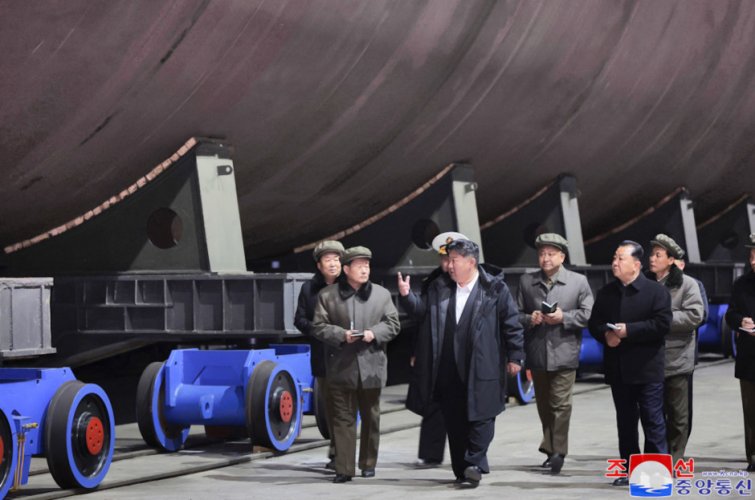
Apparently she got a hull diameter about 12-14 meters - same as modern boomers.
Ainen
I really should change my personal text
- Joined
- 25 August 2011
- Messages
- 1,277
- Reaction score
- 1,714
I don't think you can anyhow challenge fleets with missile capacity alone.I really wonder how big their cruiser would be... Most likely about 10.000 tons, of course (i.e. "big destroyer" grade), but what if they really would go after 15.000-20.000 battlecruiser, with enough missile capacity to challenge Japanese/South Korean SAG's?
Missiles in surface warfare are effectors closing kill loop. No less, no more.
Bmpd's article on Choi Hyun DDG-51 launch.

 bmpd.livejournal.com
bmpd.livejournal.com
Новый северокорейский эсминец
Оригинал взят у коллеги imp_navigator в Новый северокорейский эсминец На судостроительной верфи в г. Нампхо в присутствии Генерального секретаря Трудовой партии Кореи, Председателя государственных дел КНДР Ким Чен Ына состоялась торжественная церемония спуска на воду нового эсминца Чхве…
 bmpd.livejournal.com
bmpd.livejournal.com
- Joined
- 9 October 2009
- Messages
- 21,969
- Reaction score
- 13,615

Heavily Armed Missile Destroyer Joins North Korean Navy
North Korea has commissioned a heavily armed missile destroyer as largest and most advanced vessel to join its fleet on April 25 in Nampo.
- Joined
- 11 February 2007
- Messages
- 2,561
- Reaction score
- 4,360
Could they have squeezed in any more unnecessary corner reflectors? (Looking at the edging around the hangar deck doors, etc).
Reloading the Pantsir is going to be a pain, there appear to be no reloading hatches, so they're left with humping 95kg launch containers up a ladder, or waiting until they're back in dock.
I'm wondering if the angled 'shed-roof' enclosure for the two smaller VLS hatch sets implies slightly inclined launch tubes?
there might some operating reason tend to (relatively)larger ships:I also do question the logic behind such a procurement; wouldn't it make more sense to simply build larger numbers of fast attack craft, semi-submersibles USVs, and stealth corvettes (a la Visby-class) which can make uses of the many bays and islands present in North Korea. ...
1.They (might) have some trouble to keep high power compact engine running well
(which FAC/Corvettes relay on),
while frigates can powered by much more bulky engine.
(at least cruising,eg:FM38 8-1/8 for Hamilton class)
2.They can't get enough liquid fuel for years,and as they modernizing their army/rocket force,
much more diesel fuel needed for land vehicle.
Larger diesel engine and gas turbine can run on heavy fuel oil with some penalty,
(eg:UP railroad used #5 fuel oil both on diesel and gas turbine locos)
saving diesel fuel to other service.
and step ahead:they might use treated coal tar as ersatz fuel oil.
Dilandu
I'm dissatisfied, which means, I exist.
Most likely, they just want a blue water navy, capable of protecting their maritime trade - including tankers, vital for North Korea fuel supply - from overseas harassment/attacks. Also, even for home waters they need ships capable of operating long-range multi-channel SAM, to provide anti-air protection to smaller units.there might some operating reason tend to (relatively)larger ships:
- Joined
- 11 February 2007
- Messages
- 2,561
- Reaction score
- 4,360
That would make more sense for a Western style Navy, for North Korea it means producing significantly more junior officers with the training and initiative to operate independent of higher command. They could do it if they want to, but do they want to?wouldn't it make more sense to simply build larger numbers of fast attack craft, semi-submersibles USVs, and stealth corvettes (a la Visby-class) which can make uses of the many bays and islands present in North Korea.
Dilandu
I'm dissatisfied, which means, I exist.
And why it's supposed to be a problem for North Korea? It wasn't a problem for USSR or China, you know.That would make more sense for a Western style Navy, for North Korea it means producing significantly more junior officers with the training and initiative to operate independent of higher command. They could do it if they want to, but do they want to?
- Joined
- 11 February 2007
- Messages
- 2,561
- Reaction score
- 4,360
Like I said, it's a choice. WRT USSR, the problems reported* seemed to be in production of technically skilled junior ratings, forcing an over-reliance on junior officers for technical roles.And why it's supposed to be a problem for North Korea? It wasn't a problem for USSR or China, you know.
* During the period post Cold War when there were port visits etc happening.
ValiantHeart
ACCESS: Restricted
- Joined
- 16 December 2024
- Messages
- 45
- Reaction score
- 69
North Korea conducted armament systems testing of Choe Hyon class multipurpose destroyer hull number 51
Last edited:
Similar threads
-
U.S. Official: North Korean Submarine is Missing, Presumed Sunk
- Started by muttbutt
- Replies: 7
-
-
WI:Albanian armed forces if communist regime survived
- Started by KonTim
- Replies: 11
-
2 South Koreans, Including Army Captain, Allegedly Spied for North
- Started by BullpupRafale
- Replies: 2
-

